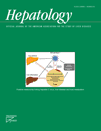Complications of alcoholic liver cirrhosis: Active assessment by endoscopy and sonography†
Potential conflict of interest: Nothing to report.
We read with interest the article by Jepsen et al.1 on a Danish population–based cohort study of the clinical course of alcoholic liver cirrhosis. Their study assessed three complications (i.e., ascites, variceal hemorrhage, and hepatic encephalopathy) at the diagnosis of cirrhosis for the prediction of mortality. This population-based cohort revealed the outcomes of complications during the clinical course of alcoholic cirrhosis; however, several issues need to be discussed.
The diagnosis of cirrhosis in this study was mainly based on clinical, biochemical, image, and hemodynamic findings, which are useful in patients with advanced liver cirrhosis. Only 6% of their patients were confirmed by liver histology. Those with a less severe degree of cirrhosis may have been underdiagnosed. Furthermore, alcoholic hepatitis may share similar clinical features with alcoholic cirrhosis, which needs to be differentiated by liver histology.2-5
The detection of ascites and varices in patients with cirrhosis is important in predicting the prognosis.6 In Jepsen et al.'s study,1 ascites was defined mainly by physical findings. Patients with cirrhosis and lesser amounts of ascites could have been underdiagnosed. Sonography has been widely used for the early detection of ascites.
We analyzed 141 patients with alcoholic liver disease between July 2005 and March 2008. We evaluated the presence of complications in 83 patients with alcoholic cirrhosis; liver histology provided confirmation for 54%. Liver histology may not be available for patients with decompensated liver function and coagulopathy. All patients underwent an ultrasound examination to confirm the presence of ascites, and 76 patients (92%) underwent endoscopy to confirm the presence of varices. Figure 1 shows the prevalence of major complications in our patients with alcoholic cirrhosis. Our recent study indeed confirmed that endoscopic findings of varices, with or without hemorrhaging, predict mortality in patients with alcoholic cirrhosis with or without alcoholic hepatitis.7 Therefore, the active assessment of patients for varices and ascites may allow an early prediction of mortality.

Prevalence of complications in 83 patients with alcoholic cirrhosis.
References
Yi-Wen Huang M.D.* , Jui-Ting Hu M.D.* , Sien-Sing Yang M.D.* , * Liver Unit, Cathay General Hospital Medical Center, Taipei, Taiwan, Division of Gastroenterology, Department of Internal Medicine, National Taiwan University College of Medicine and National Taiwan University Hospital, Taipei, Taiwan, Faculty of Medicine, Fu-Jen Catholic University College of Medicine, Taipei, Taiwan.




